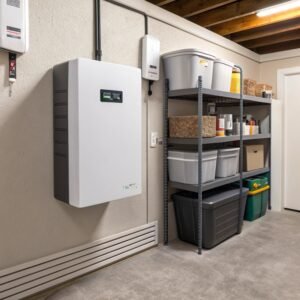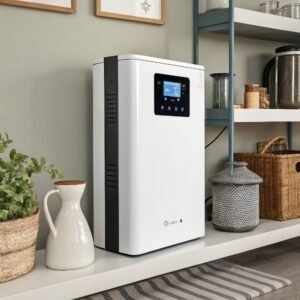Where does Excess Solar Power Go When Batteries Are Full?
by
Where Does Excess Solar Power Go When Batteries Are Full?
You've installed solar panels and batteries, but what happens when your batteries are fully charged on a sunny day? That precious solar energy doesn't have to go to waste.
When solar batteries are full, excess power automatically gets sent back to the grid (if grid-tied), gets diverted to secondary loads like water heaters, or gets curtailed (wasted) if no other options exist. Grid-tied systems with net metering can earn credits for this excess power.
Transition Paragraph:
Understanding what happens to excess solar power is just the beginning. Let's explore how to keep your solar battery system running optimally.
How Do I Keep My Solar Battery Healthy?
Your solar battery is a major investment. Like any sophisticated equipment, it needs proper care to deliver maximum performance and lifespan.
Keep your solar battery healthy by maintaining proper charge levels (40-80% for lithium), avoiding extreme temperatures, performing regular maintenance checks, and preventing complete discharges which can permanently damage battery cells.
Solar Battery Maintenance Checklist
| Maintenance Task | Frequency | Importance |
|---|---|---|
| Check charge levels | Weekly | ★★★★★ |
| Clean terminals | Monthly | ★★★★ |
| Monitor temperature | Seasonally | ★★★★ |
| Full system inspection | Annually | ★★★★★ |
| Capacity test | Every 2 years | ★★★★ |
Key factors affecting battery health:
- Depth of discharge - Shallower cycles extend lifespan
- Temperature control - Ideal range is 15-25°C (59-77°F)
- Charge rate - Fast charging creates more heat
- Equalization charges - Balances cells (for lead-acid)
- Software updates - Improves battery management
How Do I Know If My Solar Battery Is Bad or Just Needs Maintenance?
Your solar battery isn't holding charge like it used to. Is it failing or just needs some TLC? Here's how to diagnose the problem.
A bad solar battery shows clear signs like significantly reduced capacity (below 70% of original), inability to hold charge overnight, swollen casing, or error codes. Simple maintenance issues include dirty connections, outdated firmware, or improper settings.
Troubleshooting Solar Battery Problems
Physical Symptoms of Failure:
- Visible corrosion on terminals
- Bulging or swollen battery case
- Leaking electrolyte (in lead-acid)
- Unusual odors
Performance Indicators:
- Rapid voltage drops under load
- Failure to reach full charge
- Excessive heat during operation
- Frequent system shutdowns
Maintenance Solutions to Try First:
- Clean all connections
- Reset battery management system
- Update firmware
- Adjust charge parameters
- Perform equalization charge (if applicable)
How to Test Battery Efficiency?
You want to know exactly how well your solar battery is performing. Proper testing reveals the truth about your battery's health and efficiency.
Test solar battery efficiency by measuring actual capacity versus rated capacity through a full discharge test, checking round-trip efficiency (typically 90-95% for lithium), monitoring voltage stability under load, and using professional battery analyzers for precise diagnostics.
Battery Testing Methods Comparison
| Test Method | Equipment Needed | Accuracy | Time Required |
|---|---|---|---|
| Full discharge test | Multimeter, load | High | 8-24 hours |
| Capacity tester | Specialized device | Very High | 4-8 hours |
| Voltage sag test | Multimeter | Medium | 15 minutes |
| Internal resistance | Impedance tester | High | 5 minutes |
| Professional analysis | Battery analyzer | Highest | 1-2 hours |
Step-by-step efficiency test:
- Fully charge battery
- Record starting voltage and capacity
- Apply known constant load
- Measure time until cutoff voltage
- Calculate actual capacity
- Compare to rated capacity
Conclusion
Excess solar power can be utilized or stored in multiple ways when batteries are full. Proper battery maintenance, timely troubleshooting, and regular efficiency testing will maximize your solar investment and system performance.



